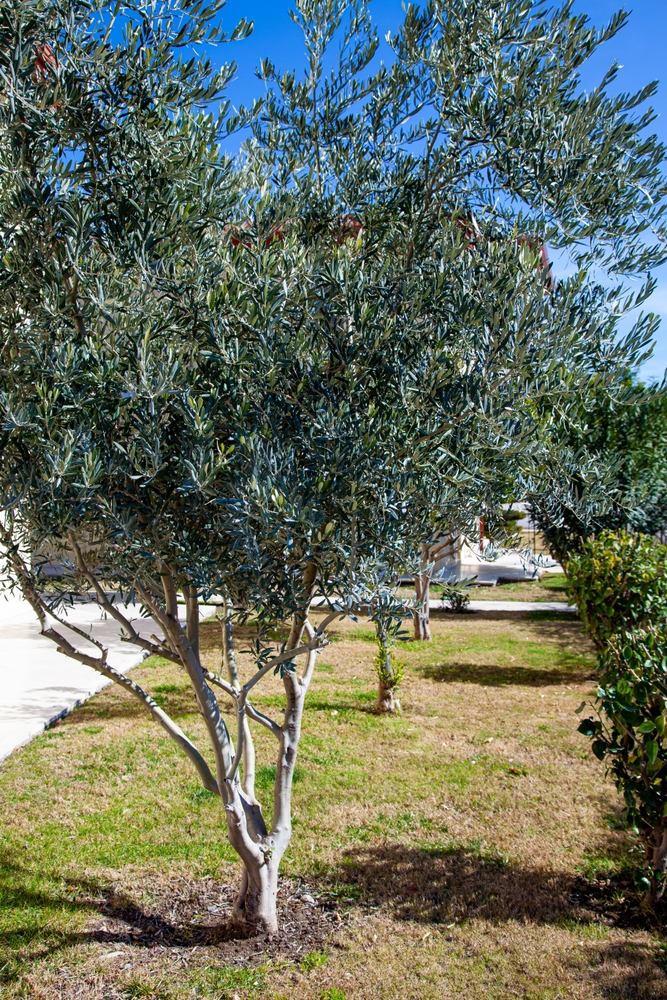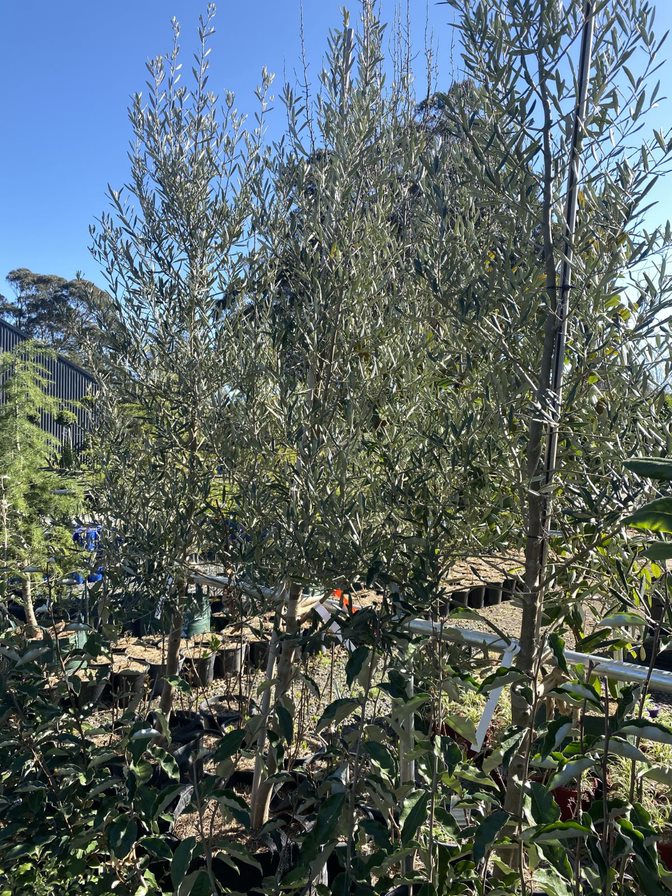Olea europaea ‘Tolley’s Upright’ 100L bag TREE EVERGREEN
$675.00
The genus Olea consists of approximately 20 species of evergreen trees and shrubs, with the most well-known species being the olive tree (Olea europaea). Olive trees are native to the Mediterranean region and are known for their ornamental value, as well as their economic importance due to the production of olives and olive oil. Here are some horticultural notes on the genus Olea:
Climate and soil requirements: Olea plants prefer a warm, Mediterranean climate with mild winters and hot summers. They grow best in well-draining, alkaline soil, with a pH range of 7.0 to 8.0.
Light requirements: Olea plants prefer full sun but can tolerate partial shade.
Watering: Olea plants are drought-tolerant and do not require regular watering. However, they can benefit from occasional deep watering during prolonged dry spells.
Fertilization: Olea plants benefit from regular fertilization, especially during the growing season. A balanced fertilizer with a higher ratio of nitrogen is recommended to promote growth.
Pruning: Olea plants require regular pruning to maintain their shape and promote new growth. Pruning should be done in late winter or early spring, before new growth appears.
Propagation: Olea plants can be propagated by seed, but it is a slow process. A more common method is to propagate by rooting semi-hardwood or hardwood cuttings in late summer or early fall.
Pests and diseases: Olea plants are relatively pest and disease resistant but may occasionally be affected by scale insects, mealybugs, or fungal diseases. Regular inspection and treatment can help prevent and control these issues.
Landscape use: Olea plants are popular ornamental plants and are commonly used in Mediterranean landscapes, parks, and gardens. They provide attractive foliage and interesting bark patterns that add winter interest. The olive tree, in particular, is prized for its economic value and is used for the production of olives and olive oil. In addition, some parts of the olive plant have medicinal value and are used in traditional medicine to treat various ailments. However, caution should be exercised as some parts of the plant are toxic if ingested.
Out of stock
Description
- Family Name: Oleaceae
- Origin: Europe
- Characteristics:
- Foliage Colours: Green, Silver
- Flower Colours: Cream
- Flower Fragrant: No
- Flowering Season: Spring
- Fruit: Yes
- Landscape Use(s): Balcony / Roof, Borders / Shrubbery,
Coastal Garden, Container / Pot, Courtyard, Erosion Control,
Feature, Foliage Feature / Colour, Formal Garden, Hedging /
Screening, Low Water Garden, Mass Planting, Streetscape /
Embankment, Topiary / Espalier, Wind Break
- Pest & Diseases: Generally trouble free
- Plant Care: Annual Slow Release Fertiliser, Keep Moist During Dry Periods, Mulch Well
- Requirements:
- Growth Rate: Moderate
- Maintenance Level: Low
- Water Usage: Low
- Tolerances:
- Drought: High
- Frost: Moderate
- Wind: High
- Cultural Notes: Olives are generally very hardy and low maintenance they require well drained soil and do best when adequate fertiliser
and water are available during the growing season. This variety can be pruned to desired shape which may mean an annual prune or more
frequent for a topiary.



